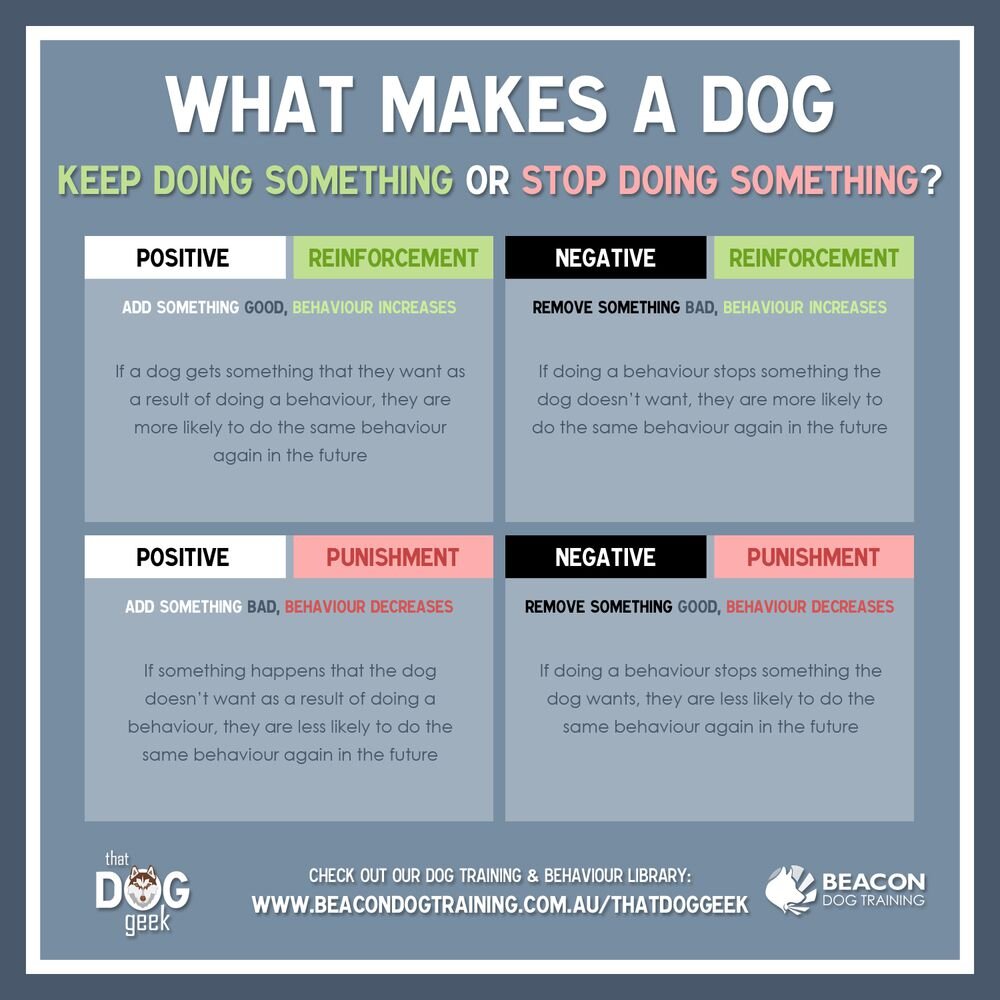What is balanced training?
Balanced Dog Training: A Comprehensive Approach to Modifying Canine Behavior
Balanced dog training is exactly what it sounds like—a holistic approach to effectively teach and modify your dog’s behavior. This method is grounded in basic learning theory, which includes four key quadrants: positive reinforcement, negative reinforcement, positive punishment, and negative punishment.
Understanding Dog Behavior: The Four Quadrants
In simple terms, when your dog performs a desirable behavior, they are rewarded with something positive or the removal of something negative. Conversely, when they engage in undesirable behavior, a negative consequence is introduced or a positive one is removed. It's important to clarify that "punishment" in dog training does not mean inflicting pain; rather, it’s about teaching dogs that their actions have consequences. The right choices lead to rewards!
Just like a parent might tell a child, “Don’t do that,” we communicate with dogs in a similar way. How do we achieve this? Through effective tools such as training collars. Dogs often communicate using methods that may seem aggressive to us—like growling or lunging—because that’s how they establish boundaries.
The Advantages of Balanced Training
Balanced training techniques are effective because they resonate with how dogs naturally communicate: behave well and receive rewards, misbehave and face consequences. This method helps dogs learn appropriate behavior in various situations, making it an ideal choice for owners seeking reliable training solutions.
Key Principles of Balanced Dog Training
Every balanced dog trainer understands that, at some point, every dog may need a correction. We deliver corrections only when we are confident that the dog understands what is being asked of them. Our approach is flexible, recognizing that each dog-owner relationship is unique. A good balanced trainer is open-minded, willing to explore various tools and techniques to find the best fit for both the owner and their canine companion.
Do Your Homework on Dog Training Methods
It’s essential to do your homework when researching dog training methods. The current emphasis on positive-only training can sometimes be biased, using terminology that may discourage questioning their stance. Many advocates for positive-only training claim to use “science-based” methods, but it’s crucial to examine the studies they reference. Often, these studies lack real-world applications and focus on simpler behaviors that don’t accurately reflect true aggression or serious behavioral issues.
For example, punishing a dog for trying to eat can lead to unnecessary stress and anxiety. In reality, there’s no scientific evidence showing that balanced dog training leads to negative effects in dogs—period.
We are committed to fostering open communication and welcome any questions you might have about our balanced dog training techniques or the tools we use. Please don’t hesitate to reach out!
Examples of the variety of equipment used in balanced training; long line (for recall), slip leads, basic leash, slip chain, prong collar, toys, e collar, vibration/beep collar, treat bag (a MUST)


